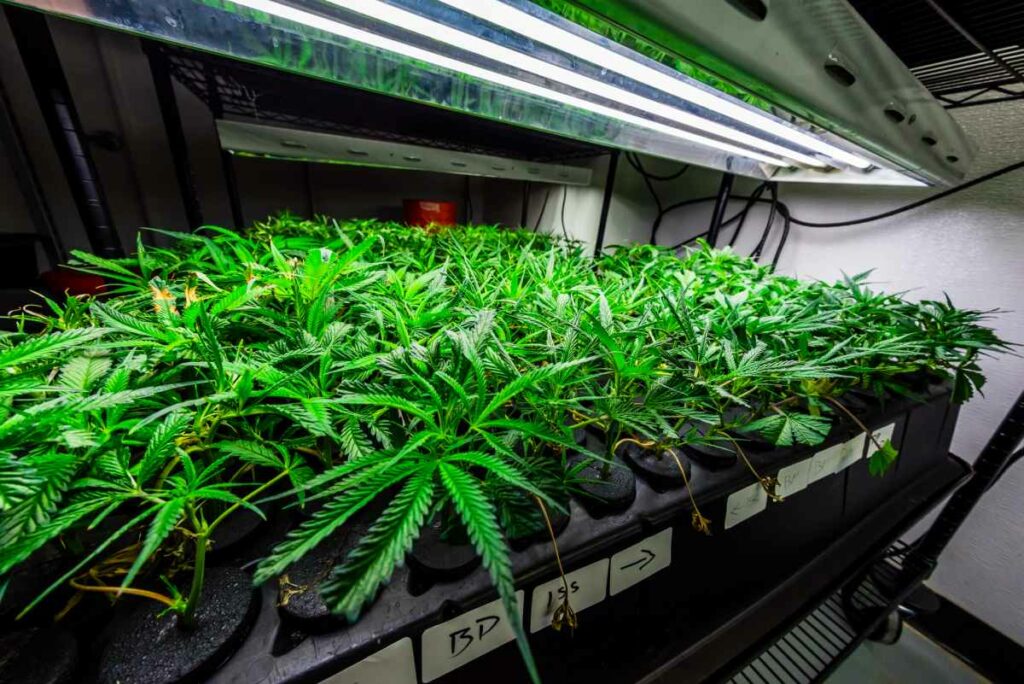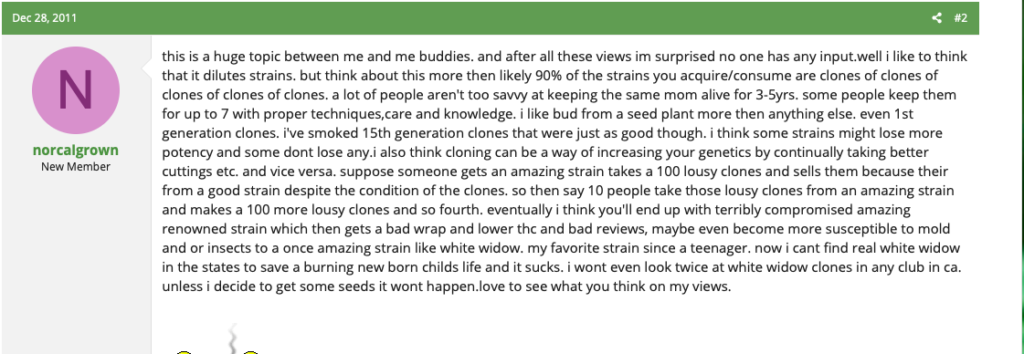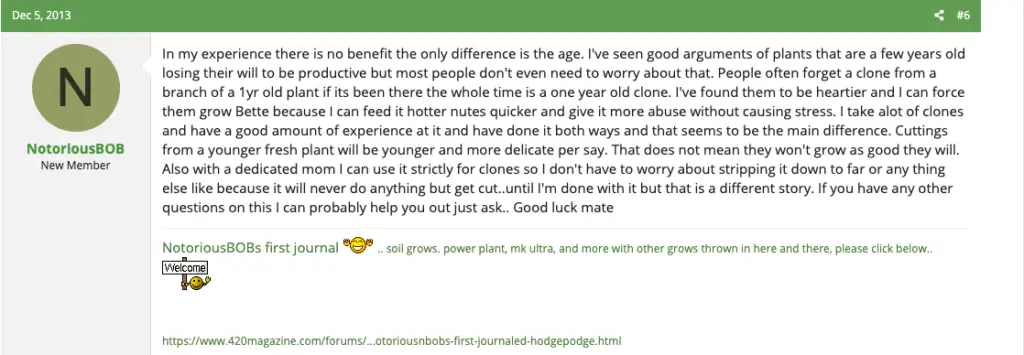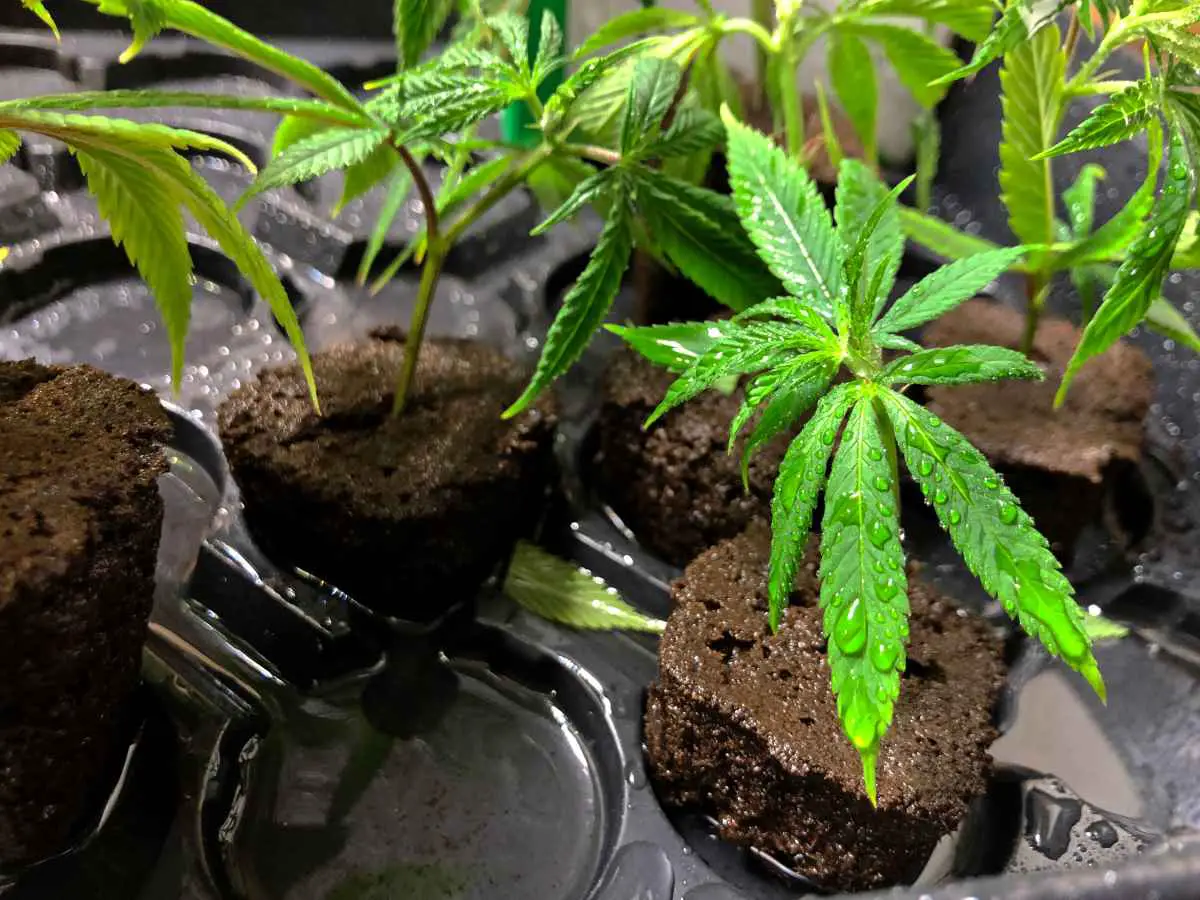Cloning is a clever way to retain the quality of your weed. It guarantees that the clone follows the genetic make-up of the mother plant.
And with that comes the assurance that the plant’s defenses against harsh climates, its potency, and chemical compositions remain the same.
Cloning saves growers the trouble of repeatedly breeding to get the plants with the qualities they like.
They also don’t have to buy seeds at all.
Once you find the plant with the unique qualities you desire, you keep the mother plant and simply take cuttings every time you want to grow.
Most growers keep a mother plant and take clones from it for as long as it lives. That’s why you hear of mother plants in every cloning discussion.
However, some growers cut clones from clones, and while this isn’t a popular choice, others don’t want to go through the trouble of keeping mother plants.
Table of Contents
Is It Bad To Take Clones From Clones?
Taking clones from clones isn’t bad, but the further down you cut from clones of clones, the higher the risk of losing the strain’s distinct qualities. If you know how to get quality cuttings, and without stressors, you can clone up to the 20th generation without losing potency and vigor of the strain. But many factors affect the quality of your clones.
I don’t grow from clones. I love growing from seeds because once they take root, nothing deters their growth.
The taproot has a lot to do with the robust and healthy development of seedlings. Something that clones don’t have.
With seeds, you won’t have to worry about the health of mother plants.
Owing to the speedy lifespan of clones and the fact that it’s easier to get a closer genetic makeup to the plant than with seeds, most commercial-scale growers always prefer cloning to growing from seedlings.
They want consistency in the buds they produce, something only cloning can assure.
Despite the wonders of cloning, growers hold different opinions on whether cloning from clones ad infinitum reduces the strain’s quality over time.
However, most growers seem to agree on the factors that affect the quality of your clones from clones.

Factors That Affect The Quality of Clones From Clones
The question of whether clones weaken over time isn’t a new one.
You’ll be surprised to know how many surveys/chatroom sessions have been had around this subject.
Just a peek into growing forums will overwhelm you with information from real growers growing from clones.
Jorge Cervantes, the author of multiple helpful growing books also dug deeper into the quest for this answer.
He reports that he interviewed many growers who grew from clones, and none experienced any breakdown in the quality and vigor of the strains for more than 20 generations.
Here are factors growers across the board agree to affect the quality of clones from clones;
The Quality of The Cuttings
Cutting the clones is an art. If you’re not good with the blade, you might end up with low-quality cuttings— even if the strain is excellent.
If you get a weak cutting from a good strain (1st generation), then get other poor cuttings from them (2nd generation), you continue to deplete the quality of your plant.
The DNA might take more tragedy to mutate, but the subsequent cuttings from poorly cut clones lose distinct qualities like aroma.
They might also become more susceptible to diseases and environmental stressors.
Ensuring that you get quality cuttings is essential to the success of your cloning game. However, it gets tricky to buy clones because you might end up purchasing a 10th generation clone.
If your mother plant is a 10th generation clone, you’re not starting on safe ground. The plant has gone through a series of stress that might mutate its genetic make-up.

When everything falls into place, your clones shouldn’t pose any challenge because clones are the exact genetic replica of the mother plant.
The mother plants pass their DNA composition to the clones, and this blueprint can only be damaged through radiation, exposure to harmful chemicals, or poor cloning procedures.
“Clones that grow poorly are generally the result of poor, unsanitary cloning practices.” – Jorge Cervantes
The Original Mother Plant’s Health
Any plant can be a mother plant, but choosing the right mother plant takes work.
If you bought a pack of ten seeds and grew them and chose a mother plant, you probably need to plant more.
Commercial breeders grow hundreds of seedlings before choosing the right mother plants.
If the pool you choose from is a lot bigger, your chances of getting a mother plant of the highest potency, stable genetics, and vigor are higher.
But it takes more work, more space, and more resources than what most growers are willing to dedicate.
After growing hundreds of seedlings and picking only a few plants to use as mother plants, guess where the rest of the cuttings go— to the dispensary!
That’s why you can never be sure of the quality of clones you get from the dispensaries. Most are rejects from commercial growers just trying to get a few bucks for the lousy cuttings.
Take cuttings only from healthy mother plants. This helps strengthen the clones against environmental stress, further protecting them from stressed-induced mutations.

The Mother Plant’s age
Clones get hardier the longer they grow on the plant. As a rule of thumb, you should never cut clones from mother plants less than two months old.
Such clones are weak and more susceptible to the ravages of the environment.
They tend to grow slowly and may not grow big enough for the strain’s maximum yield.
When you cut clones from flowering mother plants, you get the clones at their flowering phase. Which means they’ll need a transitory period to revert to vegetative growth.
Though they might take rook quickly, their growth will be a little stalled during this transition. But that’s not the only problem to expect when you cut clones from flowering mother plants. They also tend to flower prematurely and are more susceptible to diseases.

Reasons Why Some Growers Don’t Keep Mother Plants
Listening to what growers say, keeping a mother plant is the best way to retain the quality of your strains. Cloning from a mother plant keeps the genetics of clones closer to the original mother plant.
And that’s what all growers want— getting a genetic replica of their best strains!
However, keeping mother plants come at a cost. And these are the reasons why some growers clone from clones instead of from a dedicated mother plant;
Mother Plants Take Space
Most indoor growers lack space. And when you have a dedicated mother plant, you need a special setup for it away from the plants you intend to flower.
The mother plants have unique needs— lights and feeds are all different from the plants you flower. Thus, keeping a mother plant is a luxury you can’t afford if your space is limited.
So, for some growers, the risk of losing the potency of the strain through cloning clones of clones is the sensible risk to take.
Insufficient Grower Know-How
Mother plants require specialized treatment to keep them in the vegetative state for years without affecting their health.
Phenotypic changes in the genes are transferable to the subsequent cuttings. Thus, any mother plant stressed by poor growth conditions can hurt your subsequent cuttings.
As such, for growers who can’t keep the mother plant stuck in the vegetative phase that long, cloning from clones seems to be a better idea.
Legal Restrictions
Some states limit the number of plants you can grow. The mother plant counts, even if you don’t flower it.
Thus, if you’re growing in a state that only allows you to grow two plants, keeping a mother plant hurts your progress because you can’t flower two plants at a time.
Do Clones Get Weaker?
A clone, being the mother plant’s genetic copy, will produce similar characteristics if kept in the same conditions as the mother plant. However, clones are susceptible to genetic mutations when exposed to radiation, chemicals, and harsh growing conditions.
According to Jorge Cervantes, clones can suffer genetic mutations, which are passed to the next generations through cuttings.
This means that they will lose the original qualities that attracted you to the original strain. Hence get weaker through the generations.
How Many Times Can You Clone A Clone?
Some growers keep cloning from clones up to the 20th generation without much change in the quality of the plants.
When it comes to the number of times you can clone from clones, it all depends on what you’re getting.
If you see the clones begin to show phenotypic changes, like a different number of fingers on the leaves, then you should stop.
A common sign you should stop cloning from the clones is when they begin to lose the original smell of the mother plant.
Can You Top And Clone At The Same Time?
You can top and clone at the same time, provided the plant you’re topping is more than two months old. If the plant is younger than two months, the cuttings will have fewer desirable qualities.
Clones take the age of the mother plant.
If the plant is two months old, the clone is also two months. And the older the clone, the hardier it is. An older clone, therefore, has better chances of survival.
In summary, cutting clones from clones isn’t wrong. Sometimes, it is the only choice you have given your unique growing limitations. However, keeping a mother plant keeps the genetic makeup of the clones closer to the original.

